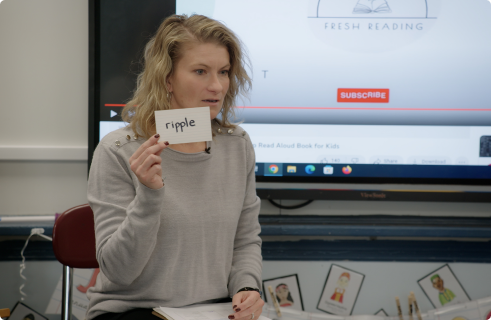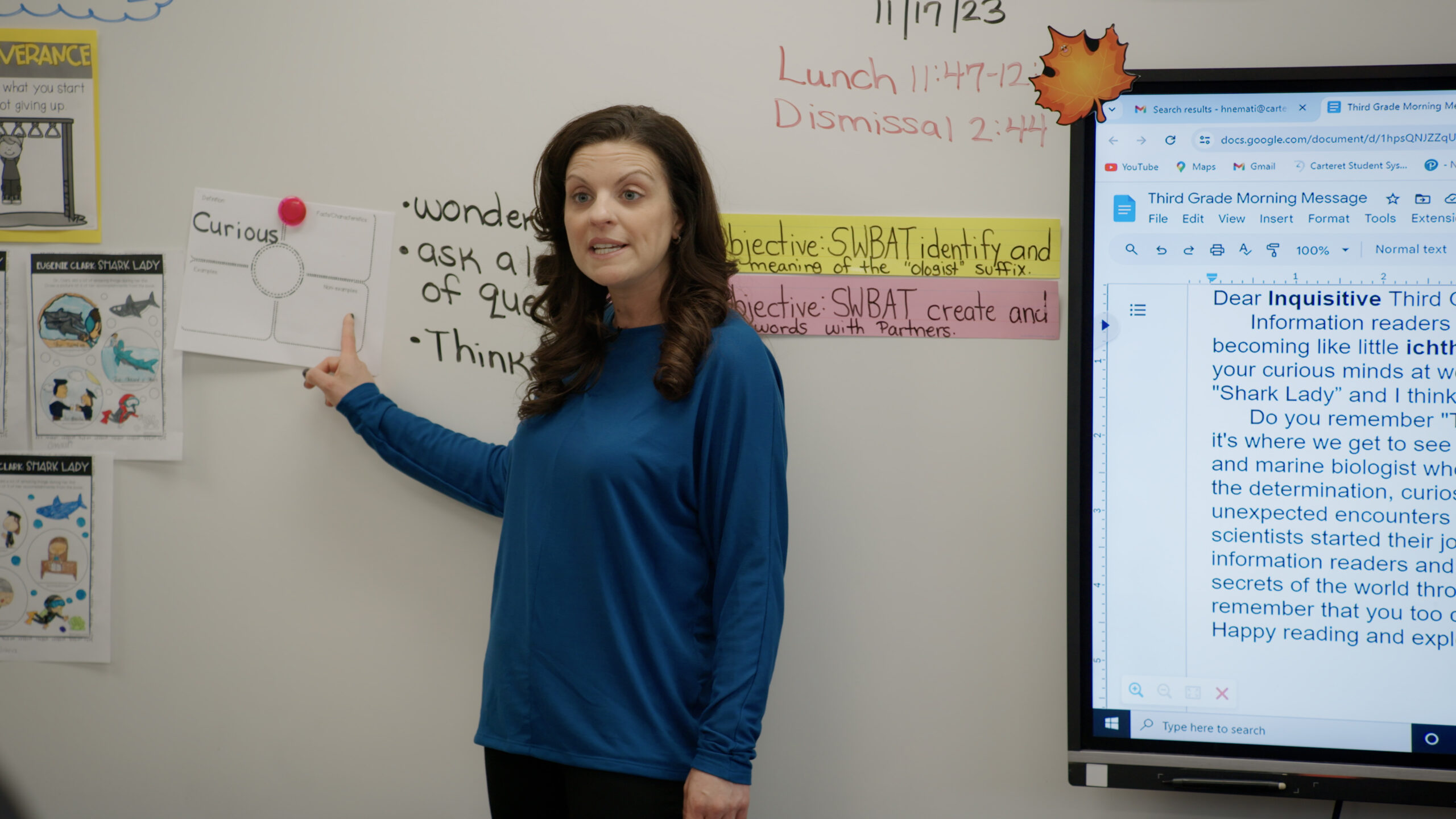Tier Two Vocabulary Words: A Coaching Conversation
Overview
In this video we witness a one-on-one literacy instructional coaching session. The discussion shows how to choose tier 2 words from an instructional text. The teacher uses instructional level texts 2-3 grade levels higher for interactive read-alouds and identifies tier 2 words to teach explicitly.
Key Take-aways
•Align with grade-level colleagues when deciding which tier-two words to focus on to create cohesion between teaching and learning.
•Using text sets and teaching thematically allows students to have multiple exposures and opportunities to store new vocabulary words in their long-term memory.
•Creating word routines and celebrating vocabulary acquisition builds a positive word-learning culture that students carry with them.
Transcript
Dr. Ken Kunz: I met with Mrs. Namati for a coaching conversation about vocabulary. Her instructional focus is on unlocking the magic of tier-two words through qualitative text analysis. Join us as Mrs. Namati guides us through the process of identifying those crucial tier-two words, turning a captivating read-aloud into an opportunity for vocabulary enrichment, and language development.
Dr. Ken Kunz: So recently when I visited your classroom, I noticed that your word wall is really exploding with words. How are things going with that?
Teacher: This year, things are going really well. So, every week the students usually have about five new words. Um, after we learn them, they go right to the word wall.
That’s great. So you can tell that they’re definitely using it. I even saw the word paleontologist up there.
Teacher: Yes. Yep. Yes.
Dr. Ken Kunz: So I know that’s going to connect with our new unit because we’re moving into nonfiction, informational texts and, I believe our mentor text this year is the Shark Lady.
Teacher: Yeah. It’s Shark lady. So we read the picture book on Shark Lady and we’re currently reading the chapter book. So you know, with Shark Lady there’s a lot of strong vocabulary that, you know, some learners might not understand. So those are the words that we pull out for them.
Dr. Ken Kunz: What are some of the tier two words that you’ve chosen to focus on recently?
Teacher: So we’re focusing on perseverance, which isn’t necessarily in the book, but it is a word to describe Eugenie Clark and all of the things she did to fulfill her dreams. Um, foster was a word seep, valve, groggy, tugs. Just some of those vocabulary words that they might not hear every day.
Dr. Ken Kunz: Okay. So you’re choosing roughly five tier-two words that you’re noticing are going to help deepen their understanding of word knowledge, their words that they might see in other aspects.
Teacher: Absolutely. Especially other nonfiction books that they read.
Dr. Ken Kunz: Great. So we did talk in our professional development, we did talk a little bit about how there are words to teach and then there are words to just simply explain and move on.
Teacher: Yes.
Dr. Ken Kunz: So it seems like you’ve chosen some really great words to focus on. I noticed you also had the display in your room with the word perseverance. Where the students were able to show different personal connections to that.
Teacher: Yes. So perseverance we took to describe Shark Lady. So they looked through the picture book and they took three examples from her life where she showed perseverance. So I feel like just drawing it really helps them connect with the word.
Dr. Ken Kunz: That’s great. That’s also a great strategy too, for supporting the many multilingual learners who have in your classroom this year.
Teacher: Yeah. And then they also have the Freyer model in their book baggies for when they’re reading. If they come across a word that they don’t know, they write it down and they try to, you know, give, give their own child-friendly definition facts about it, an example. So it kind of helps them with their vocabulary.
Dr. Ken Kunz: I think this is important because it’s also very student-centered. And I love that you’re allowing them to choose some of those tier-two words as part of their independent reading.
Teacher: Yes. Absolutely.
Dr. Ken Kunz: So, are you noticing any trends in the firm models that you’ve collected so far?
Teacher: I feel like they’re, they’re, they’re picking out words, you know, a lot of words are words that they don’t really know, so I’m noticing that they are recognizing, oh, I don’t know what this word is. I should probably try to figure it out.
Dr. Ken Kunz: That’s great. Yes. So recently, we also talked about having the sort of like a word nerd routine in our classroom of pronouncing the word’s syllables, clapping them and talking about them in student-friendly ways. Is that routine working well with your read-alouds?
Teacher: It is. So what we do is, I’ll, before I read the book to the students, I take out the words, put them on note cards, and then we, we come up with a child’s friendly definition that they’ll remember a lot of hand gestures. We just did the word foster. So they either made hearts or put their hands on their heart so they remember they could connect the word with the movements.
Dr. Ken Kunz: That’s great. I love the total physical response. Yes. Don’t forget too, that as you’re choosing those five words, display them in your whole group area. So at the end of the week, you get to have a big celebration as you move them onto the word wall.
Teacher: Yes, exactly.
Dr. Ken Kunz: I think that during one of our next coaching meetings, we should take a look at some of your diagnostic data. Now that the students have been with us for some time, we noticed that a lot of them needed help with those language skills at the beginning of the year. It’ll be very interesting to see where they are now.
Teacher: Yes, Absolutely.
Dr. Ken Kunz: Alright, sounds like a plan.
Teacher: Thank you.


